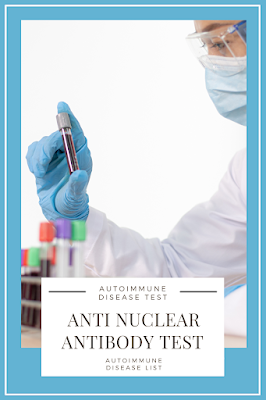Antibodies, proteins produced by the immune system, combat harmful foreign substances like bacteria and viruses. These proteins, made by B cells, trigger a response to fight infections, known as inflammation.
Antibodies targeting normal proteins in the cell nucleus are known as antinuclear antibodies (ANA). Elevated ANA levels are a common feature in autoimmune conditions like lupus, Hashimoto’s thyroiditis, scleroderma, polymyositis, Sjögren’s syndrome, mixed connective tissue disease, drug-induced lupus, inflammatory bowel disease, and autoimmune hepatitis and more.
An antinuclear antibody test can help determine the existence of particular types of antibodies in the body.
ANA TEST PROCEDURE
The ANA test is a common initial test for autoimmune conditions, conducted by extracting a blood sample with a small needle. It's a simple procedure lasting about five minutes, causing minimal discomfort. A positive result doesn't always indicate an autoimmune condition.
ANA TEST RESULTS
ANA test results are typically divided into titers and patterns.
Titers are often shown as ratios like 1:40 or 1:80, with some labs considering anything above 1:160 as positive.
Patterns can include homogeneous, speckled, or centromere.
If ANAs are present, the pathologist will see fluorescent cells making a staining pattern. The fluorescent pattern seen can help identify the type of autoimmune disease present. Staining patterns include:
- Homogenous: A homogenous staining pattern means the entire nucleus is stained with ANA. It’s the most common type of staining pattern. A homogenous pattern can mean any autoimmune disease but more specifically, lupus or Sjögren’s syndrome.
- Speckled: A speckled staining pattern means fine, coarse speckles of ANA are present throughout the nucleus. A speckled pattern may indicate various diseases, including lupus and Sjögren’s syndrome.
- Centromere: A centromere staining pattern means the ANA staining is present along the chromosomes. A centromere pattern may indicate scleroderma.
- Nucleolar: A nucleolar staining pattern means ANA staining is present around the nucleoles. The nucleoles is inside the nucleus and produces the cell’s ribosomes. A nucleolar pattern may indicate scleroderma. But it can also indicate Sjögren’s syndrome or mixed connective tissue disease or be a false positive.
- Peripheral: A peripheral staining pattern means ANA staining is present around the edges of the nucleus. It has a shaggy appearance. A peripheral pattern may indicate lupus. FROM CLEVELAND CLINIC
Lab norms may differ, so consult your healthcare provider for interpretation.
A positive ANA test doesn't always mean an autoimmune condition is present. Around 3-15% of healthy individuals have ANAs. Aging and viral infections can also raise ANA levels temporarily. Medications and cancer can also impact results.
Further investigation by a doctor is necessary for a definitive diagnosis.
You might also like to find out:


No comments:
Post a Comment